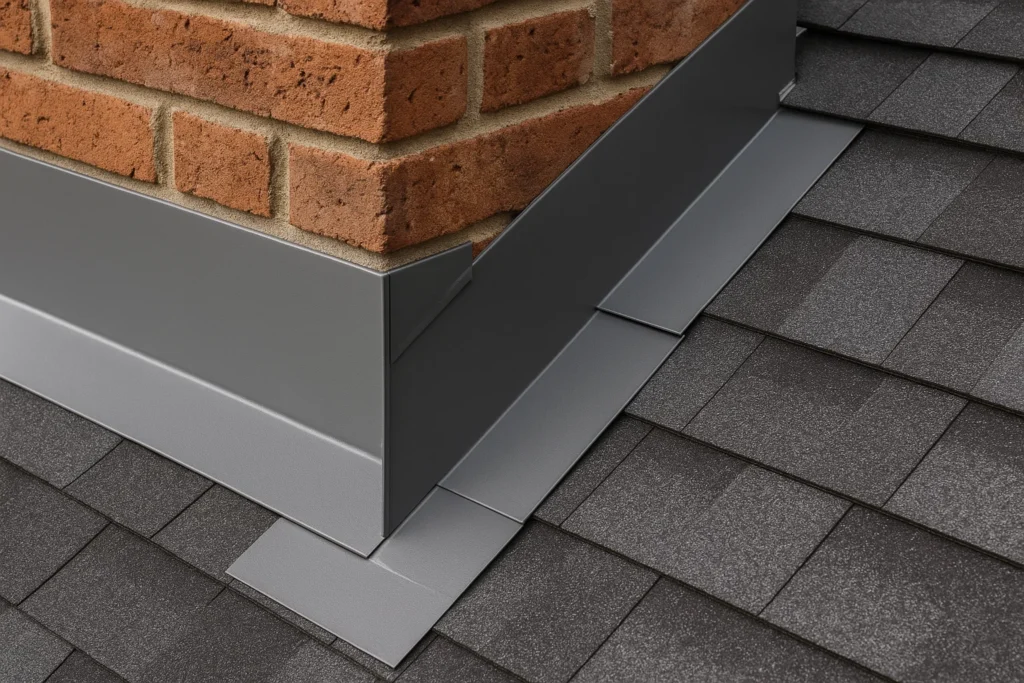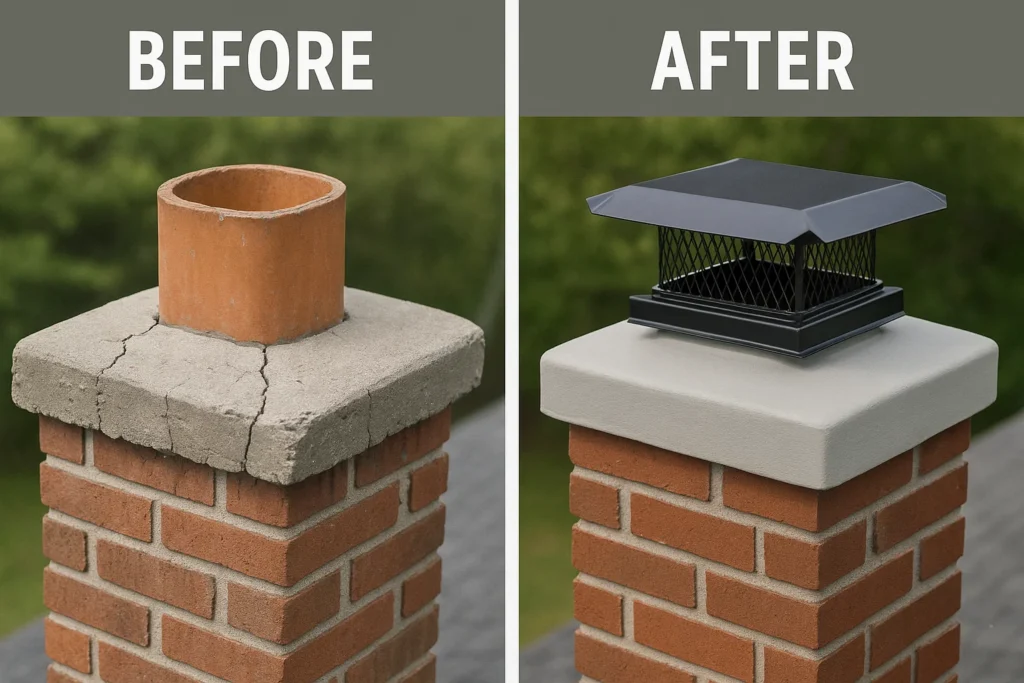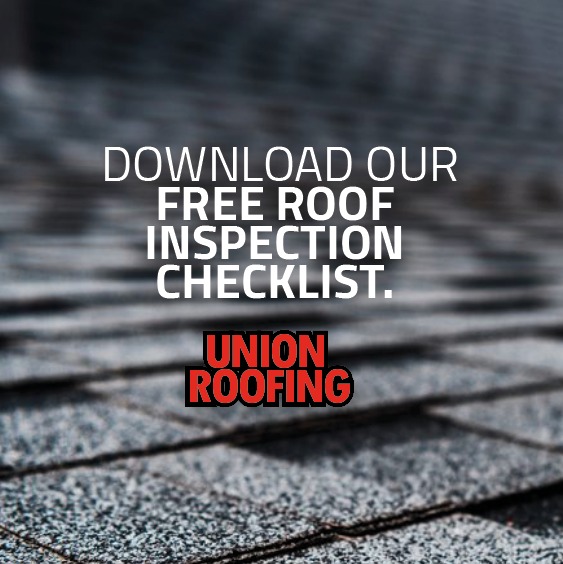
If you’ve ever noticed a brown water stain spreading across your ceiling near the fireplace, you’re not alone. Chimneys are one of the most common sources of roof leaks, especially as temperatures drop in Bucks and Montgomery counties. That’s why roof and chimney repair becomes important this time of year.
Autumn is the perfect season to pay attention to this often-overlooked part of your home. A few simple maintenance steps now can prevent costly water damage once the freeze–thaw cycles of winter begin. In this post, we’ll look at why chimneys cause so many leaks, what signs to watch for, and how proactive care can protect your roof all season long.
Why Chimneys Cause Roof Leaks
Every roof has vulnerable spots, and the chimney tops the list. It’s where roofing, masonry, and metal all meet—three materials that expand and contract at different rates. The metal flashing that seals this connection is your main defense against water intrusion. However, even the best installation won’t last forever.
- Step flashing: Works under shingles to guide water down the roof slope.
- Counter flashing: Tucks into chimney mortar to protect step flashing from exposure.
- Cricket or saddle: Diverts runoff away from wide chimneys to prevent pooling.
To learn more about how flashing works and why it fails, check out this guide on chimney flashing and roofs.
When flashing or sealant breaks down, leaks can start. Cracked crowns, missing chimney caps, and porous mortar joints all create easy paths for water. If your chimney has siding, damaged trim or warped panels can also quickly cause leaks.

Signs You Might Need Roof and Chimney Repair
A leaky chimney rarely announces itself right away. Often, the signs start small:
- Ceiling stains: Water marks or peeling paint near the chimney.
- Granule loss: Shingle grit washing into gutters after rain.
- Rust or cracks: Streaks on the chimney, a damaged crown, or missing cap.
- Crumbling brick: Spalling or flaking on masonry surfaces.
- Musty smell: Damp attic air after storms.
If you see any of these signs, it’s time for a professional roof inspection. Catching problems early can prevent interior water damage and mold growth later.
Repair vs. Maintenance: What’s the Difference?
Taking care of your roof and chimney isn’t just about fixing leaks when they appear. You need to know when you should call for professional roof repairs and when you can rely on routine maintenance. Doing both will help keep small issues from turning into costly repairs down the road.
Roof and Chimney Repairs
Repairs address problems that are already causing, or are about to cause, leaks. These fixes restore your roof and chimney’s ability to shed water properly and protect your home.
- Reflashing or resealing: Stops water from entering at the roofline.
- Crown repair: Rebuilds or recoats the chimney top to keep moisture out.
- Cap installation: Adds or replaces a chimney cap to block rain, debris, and animals.
- Mortar repointing: Fills deteriorated joints to prevent water from seeping into brickwork.
- Shingle replacement: Fixes cracked or lifted shingles around the chimney.
These are typically one-time projects that address visible damage or leak sources. Once done correctly, they can extend the life of both your roof and chimney.
Routine Maintenance
Roof maintenance is all about prevention. A yearly checkup helps catch small cracks, rust spots, or loose flashing before they cause interior damage. Fall is the ideal time to schedule this work in Bucks and Montgomery counties, right before the wet, cold months arrive.
- Flashing inspection: Check for loose or rusted metal before leaks start.
- Gutter cleaning: Keep water flowing freely near the chimney and valleys.
- Crack sealing: Repair hairline mortar or crown cracks before freeze–thaw cycles widen them.
- Cap and screen check: Make sure the cap and spark arrestor stay secure and clear.
Pro Tip: Preventative maintenance costs a fraction of what an interior leak repair does. A short visit before winter could save you thousands later.
What Makes Our Region Tricky
Homes in Bucks and Montgomery counties face unique challenges. Heavy fall rains saturate roofs before the first frost, and those moisture-filled cracks can expand as temperatures dip below freezing. In historic areas, older brick and mortar often need repointing to stay watertight.Tree cover can also trap debris and moisture around the chimney, especially where valleys meet. That combination of leaves, shade, and standing water is tough on flashing and shingles. For local homeowners, this guide on freeze-thaw in buildings explains how freeze–thaw cycles affect roofing materials. It also explains why early maintenance matters.

Schedule Your Roof and Chimney Inspection Before Winter Hits
At Union Roofing, we’ve been helping Philadelphia-area homeowners tackle leaks for decades. Our team specializes in roof and chimney repair, combining roofing and masonry expertise to solve problems others miss.
We start with a full roof inspection and leak trace, followed by a written estimate with clear options. From there, our technicians handle the repair or maintenance work, finishing with a final walkthrough to ensure everything is sealed and secure. We’re local, licensed, insured, and we treat every home like it’s our own. Learn more about our company.
If you haven’t had your chimney checked recently, now’s the time. Schedule a roof and chimney inspection with Union Roofing before winter weather sets in. We’ll identify problem areas, recommend the right fix, and keep your home protected from top to hearth.
FAQs
Every chimney is different, so repair costs can vary. Roof pitch, access, flashing complexity, and the condition of the crown all factor in. But remember—most homeowners spend far less on preventative maintenance than on interior repairs after a leak. Investing in proper flashing and annual inspections is the best way to protect your home from water damage.
If the issue is at the roofline—flashing, shingles, or counter flashing—a roofer should handle it. For brick or mortar damage, a company that does both (like Union Roofing) is ideal.
Step flashing lies under shingles to guide water off the roof, while counter flashing seals into the chimney mortar to protect that joint. Both are essential for a watertight seal.
Yes. The crown protects the top of the masonry, and the cap keeps out rain, debris, and critters. They work together to prevent leaks.
We can perform most emergency repairs year-round, though certain sealants work best in moderate temperatures.
Once a year, ideally in the fall before freeze-thaw cycles begin.
What affects the cost of roof and chimney repairs?
Every chimney is different, so repair costs can vary. Roof pitch, access, flashing complexity, and the condition of the crown all factor in. But remember—most homeowners spend far less on preventative maintenance than on interior repairs after a leak. Investing in proper flashing and annual inspections is the best way to protect your home from water damage.
Do I call a roofer or a mason for chimney leaks?
If the issue is at the roofline—flashing, shingles, or counter flashing—a roofer should handle it. For brick or mortar damage, a company that does both (like Union Roofing) is ideal.
What’s the difference between step flashing and counter flashing?
Step flashing lies under shingles to guide water off the roof, while counter flashing seals into the chimney mortar to protect that joint. Both are essential for a watertight seal.
Do I need a chimney cap and crown?
Yes. The crown protects the top of the masonry, and the cap keeps out rain, debris, and critters. They work together to prevent leaks.
Can you repair leaks in winter?
We can perform most emergency repairs year-round, though certain sealants work best in moderate temperatures.
How often should I schedule roof and chimney maintenance in Pennsylvania?
Once a year, ideally in the fall before freeze-thaw cycles begin.
